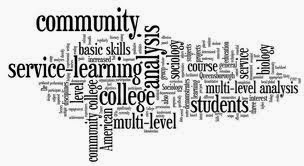This week I am going to do a connections blog piece. “Literacy with an Attitude” by J. Finn, was
pretty long but once I got into a good chunk of the reading I became very
interested. A lot of the stories the author tells are where I got my
connections.
countless efforts of lawyers, community
activists and parents and even students made this historical event possible.
They gave all they had to see that they all were accepted as equals, and had
success through the Supreme Court.My first connection is one the author makes when he makes a point about the “status quo” and that people who have power are comfortable and not motivated to make a change; they choose to remain comfortable and not bring about changes. Author Finn states, “ It takes energy to make changes, and that energy must come from the people who will benefit from the change.”(4) I connected this to the work we did with Brown vs. Board of Education; including the videos by Tim Wise and the website we used on the Brown V. Board of Education. If the people never made the effort to end segregation, if there was no protesting, or cases brought to court, would anything have been done? Maybe eventually someone would have made an effort, but the energy the
 My second connection to a reading was
to Delpit. Author Lisa Delpit argues
that teachers need to explicitly teach the rules and codes of power to students
who might not learn those rules and codes at home. I found it interesting that
Finn knew and uses a very strict system when describing his classroom with the
younger students. “ I was from the working class and I knew how the working
class and poor kids related to authority.
They expected people in authority to be authoritarian, and I gave them
what they expected.” These kids expected the teacher to show authority and Finn
never changed that. He took the power of authority and made sure his classroom
was kept in line. He always had work to be done and made sure his students were
busy during class. He enforces the no recess policy to disobedient students,
though he mentions he rarely had any. Delpit’s argument about enforcing the
rules and codes of power was done immediately here and worked very well. Even if any of the students author Finn had
did not expect the “authority figure”, they would quickly learn that was how he
ran the classroom.
My second connection to a reading was
to Delpit. Author Lisa Delpit argues
that teachers need to explicitly teach the rules and codes of power to students
who might not learn those rules and codes at home. I found it interesting that
Finn knew and uses a very strict system when describing his classroom with the
younger students. “ I was from the working class and I knew how the working
class and poor kids related to authority.
They expected people in authority to be authoritarian, and I gave them
what they expected.” These kids expected the teacher to show authority and Finn
never changed that. He took the power of authority and made sure his classroom
was kept in line. He always had work to be done and made sure his students were
busy during class. He enforces the no recess policy to disobedient students,
though he mentions he rarely had any. Delpit’s argument about enforcing the
rules and codes of power was done immediately here and worked very well. Even if any of the students author Finn had
did not expect the “authority figure”, they would quickly learn that was how he
ran the classroom.  I found a few other connections
throughout the reading, but I am a big Lisa Delpit fan and liked that Finn knew
how these students were and knew what they expected and immediately enforced
“rules and codes of power” I look for this when I go to my service learning
project each week. I try to see if my teacher uses these tactics herself. It’s
interesting to see how different students react to the teacher. That's something we as a class can discuss;
how our students react to their teacher and how the classroom itself responds
to the “authority figure” This entire reading is primarily about learning how
to teach literacy effectively to the working class students in the country. It
brings a sense of complex thinking for these students to grasp and help them
become powerful learners in the classroom just as the upper class students
would receive in their own classrooms. This link talks a lot about the social classes of students and the differences in learning levels. This other website also talks about backgrounds and differences we have in todays society.
I found a few other connections
throughout the reading, but I am a big Lisa Delpit fan and liked that Finn knew
how these students were and knew what they expected and immediately enforced
“rules and codes of power” I look for this when I go to my service learning
project each week. I try to see if my teacher uses these tactics herself. It’s
interesting to see how different students react to the teacher. That's something we as a class can discuss;
how our students react to their teacher and how the classroom itself responds
to the “authority figure” This entire reading is primarily about learning how
to teach literacy effectively to the working class students in the country. It
brings a sense of complex thinking for these students to grasp and help them
become powerful learners in the classroom just as the upper class students
would receive in their own classrooms. This link talks a lot about the social classes of students and the differences in learning levels. This other website also talks about backgrounds and differences we have in todays society. 






